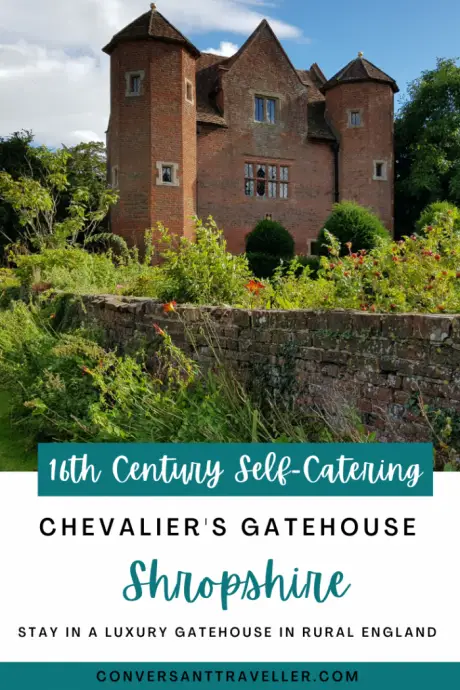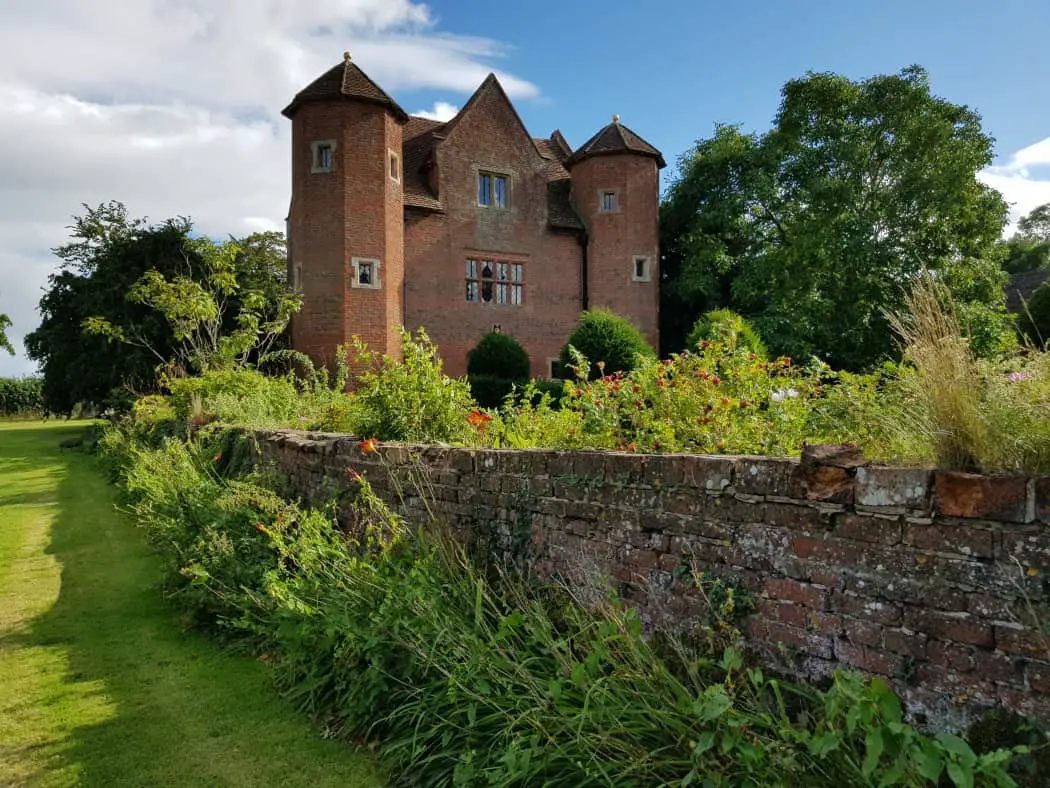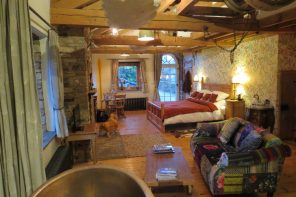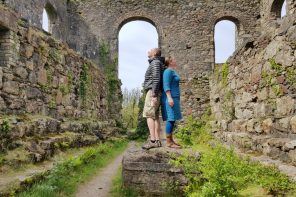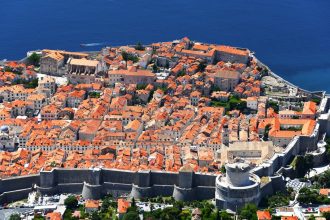The Chevalier wearily climbed the spiral stairs to the top of the gatehouse, legs aching from yet another long day in the saddle. Running a hand through his wild auburn hair, Prince Rupert of the Rhine wondered, not for the first time, just what he was doing here in rural Shropshire. It was 1646, and the first English Civil War was all but lost, with the Royalists fleeing – tails between their legs. Fresh from fighting in the Thirty Years’ War on the continent, Rupert had thought joining his uncle King Charles I in battle against Parliament seemed like a great lark. A chance to show off his skills as commander of the Royalist cavalry.
Yet here he was, lying low in a hunting lodge, with relentless rain battering the thick walls outside. Retreating wasn’t usually his thing. But at least he was safe this night, and his troop of 60 horses were garrisoned in the warm stables here on the loyal Upton Cressett Estate. Relaxing on a bed beneath the lofty beams, Prince Rupert began making plans for the future. One that didn’t involve defeat, mud, or this blasted English weather. As sleep finally overtook him, his thoughts flew across the ocean to the Caribbean. Perhaps he’d become a pirate, and spend his days drinking rum on tropical beaches. Now that sounded like a much better adventure.
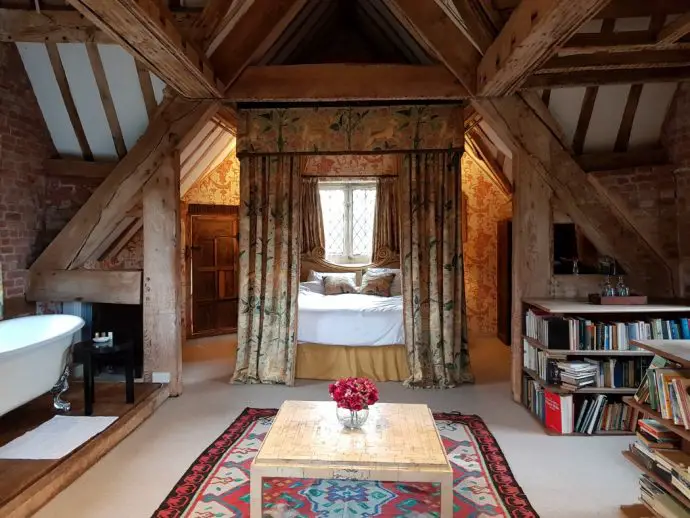
Upton Cressett Hall
The Upton Cressett estate did indeed shelter Prince Rupert as he fled from Parliamentary forces during the English Civil War, and you too can sleep in the very room he stayed in at the top of the gatehouse! Which, of course, is the reason we were there.
The hall itself is one of the finest Tudor manors in the country, and still boasts plenty of medieval and Elizabethan influences. Built in the 14th century, this Grade I historic estate was home to the Cressett family – Sir Francis was Treasurer to Charles I which is why Rupert was welcomed so warmly. The manor has changed little over the years, and was restored in the 1970s by Sir Bill Cash MP and his wife Bridget. Today the estate is in the capable hands of writer William and milliner Lady Laura Cash, who currently live in the hall.
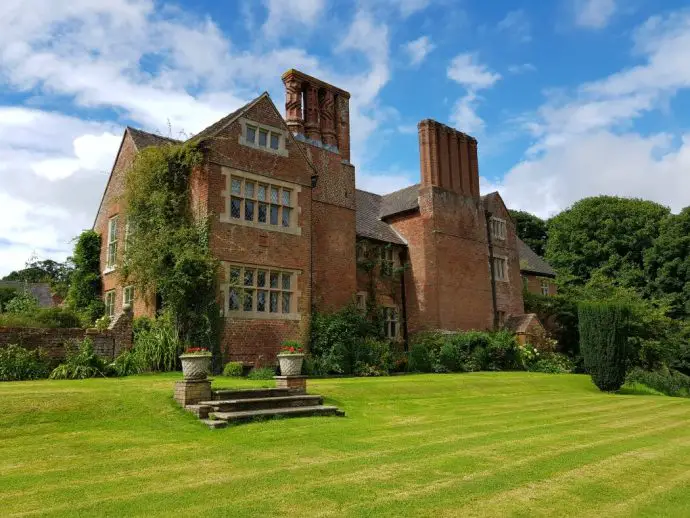
Resplendent with its 16th-century brick chimneys, a 15th-century great hall, and exquisite topiary gardens, Upton Cressett is open for tours between May and September, on Wednesday and Sunday afternoons. If you want to peep inside during your stay in the gatehouse, then check the online schedule to see if it coincides with your visit.
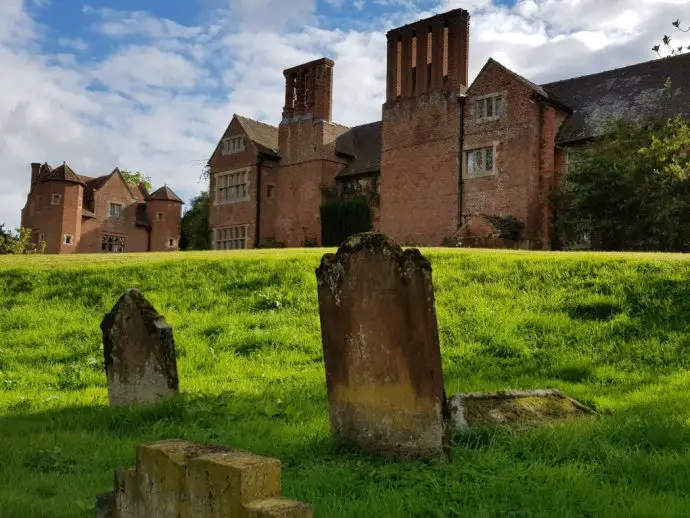
Located in the rural Shropshire countryside, the Chevalier’s Gatehouse at Upton Cressett Hall makes a great base for exploring the local area. We’d never been to the county before, and were truly won over by the stunning rolling Shropshire Hills and tranquil countryside scenery. It was definitely a case of ‘why haven’t we been here before’. Well off the beaten tourist trail, this area is superb for nature lovers, history buffs, and people like us who just want to get away from it all.
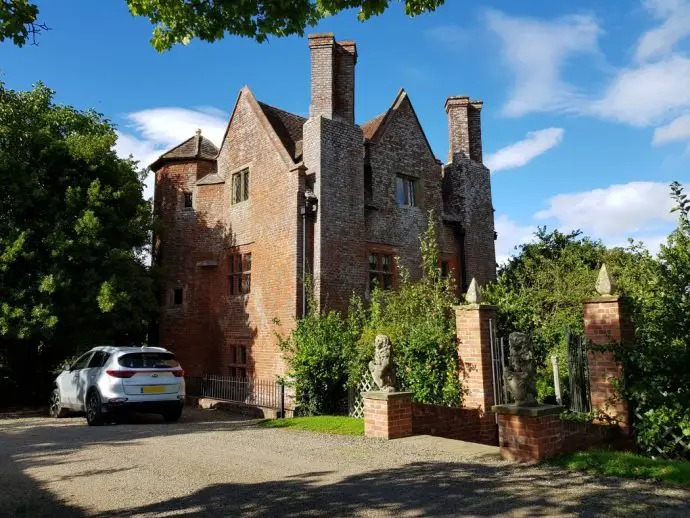
The Chevalier’s Gatehouse
The jewel in the already rather shiny crown that is Upton Cressett Estate is the turreted Chevalier’s Gatehouse. Sometimes used as a writer’s retreat, most of the year it’s a self-contained self-catering property and a truly incredible place to stay in Shropshire if you like sleeping in history.
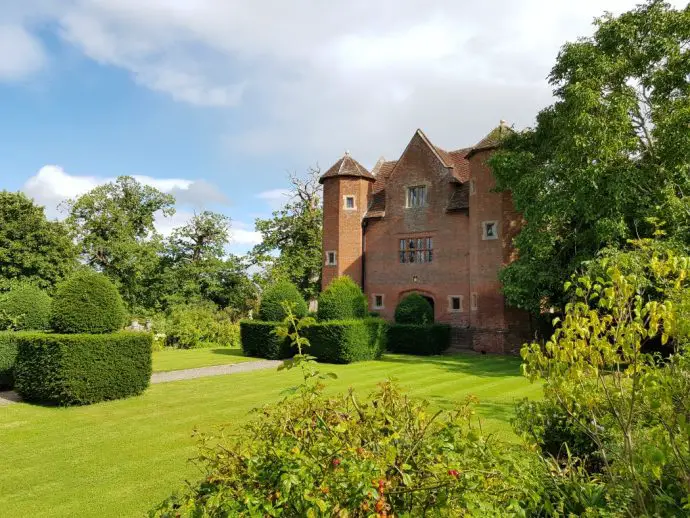
Built in 1580, this Grade I Elizabethan hunting lodge has hosted kings and prime minsters, as well as A-list celebrities if that sort of thing impresses you. If you want to walk in the footsteps of Charles I, Edward V (the oldest ‘Prince in the Tower’), Sir John Betjeman, and novelist Sebastian Faulks, then step this way.
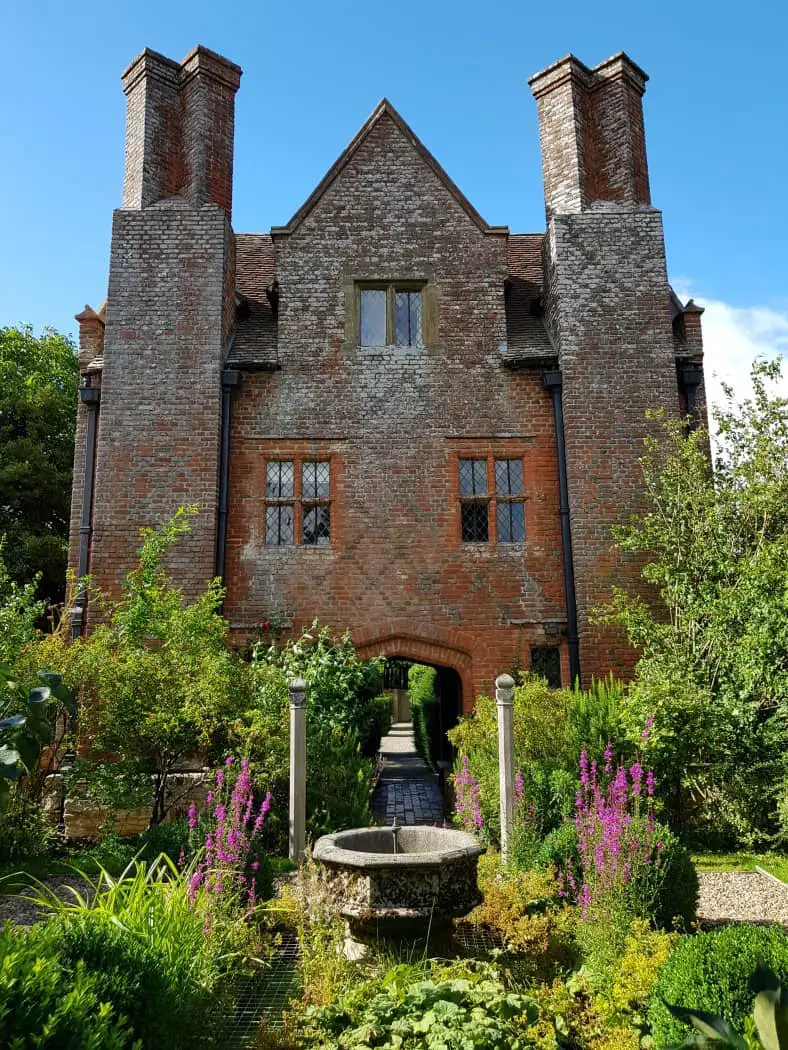
The Chevalier’s Gatehouse sleeps four, but the romance of the place means it’s popular with honeymooners and couples. If you’re visiting with friends, be prepared for a fight over the top room!
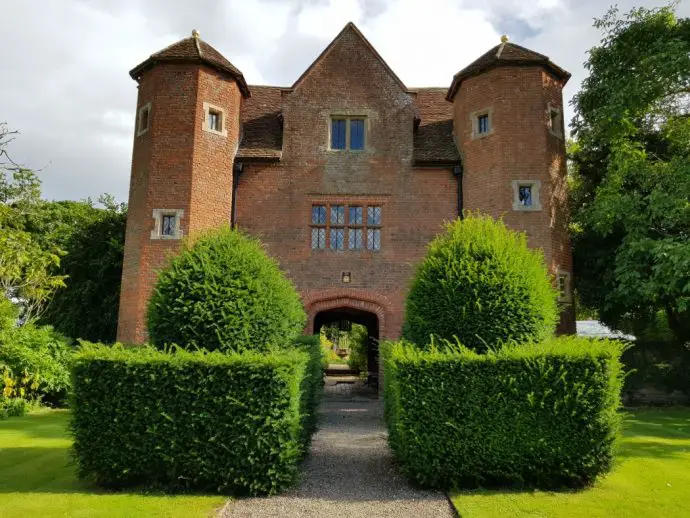
There are two historic panelled bed chambers in the gatehouse, resplendent with tapestries, mullion windows, and 16th-century plasterwork. On the ground floor you’ll find the kitchen and dining room, whilst the oak spiral stairs lead up to the lounge and bedroom suites.
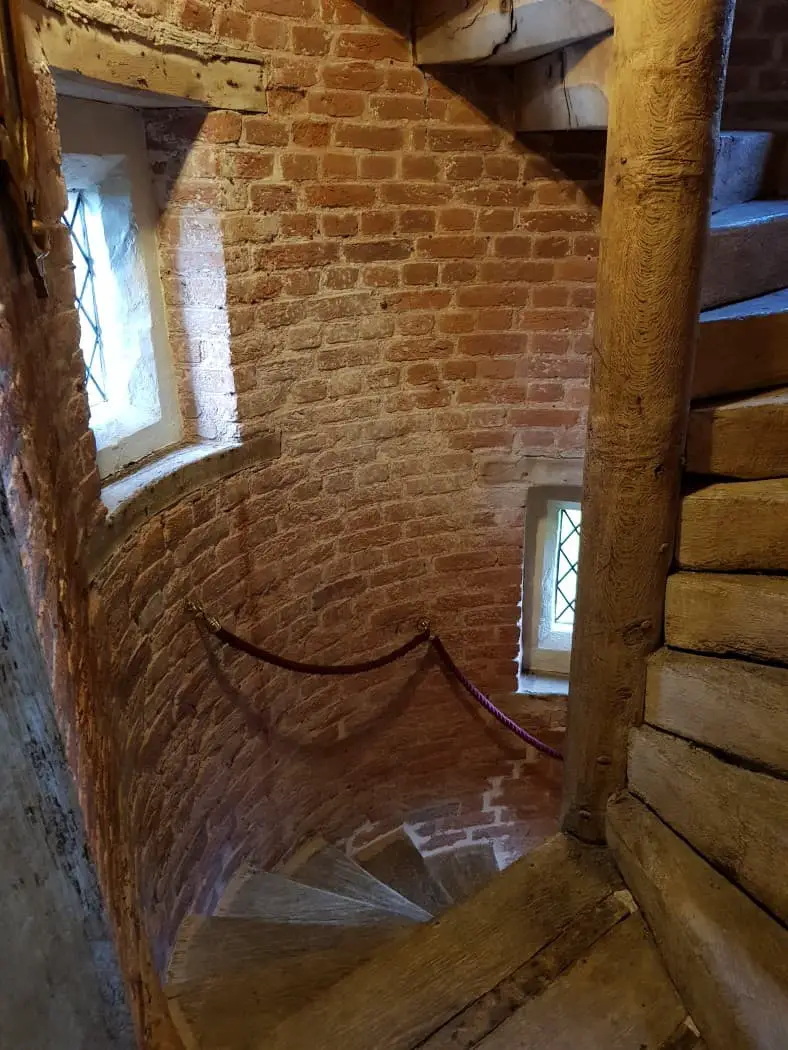
Prince Rupert Suite
Let’s start with the main event – the romantic Prince Rupert Suite right at the top of the gatehouse, which was of course named after its most famous one-time occupant. This lofty room was where the ‘Chevalier’ hid to escape Parliament forces, and although the suite is somewhat more luxurious these days, it is easy to imagine the young prince here, lying low during the war. There are plenty of ancient oak floorboards and creaking beams and to give you a proper taste of time travel.
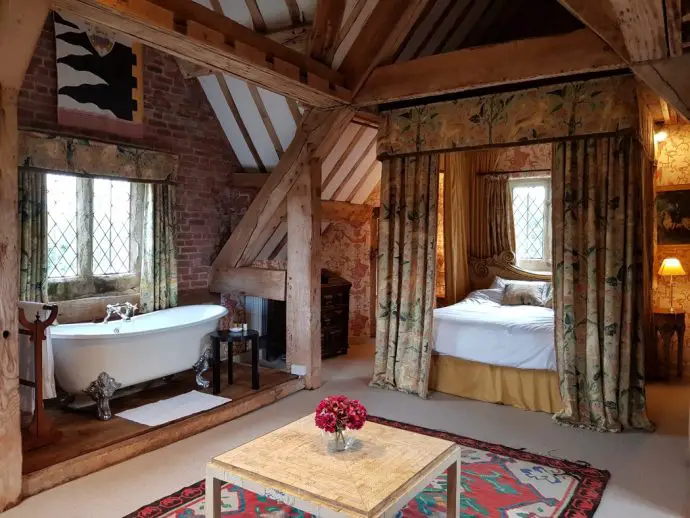
As you reach the top of the stairs, have a breather (you’ll need it!) and spend a moment just taking in what lays before you. The Prince Rupert Suite belongs on the covers of stylish heritage magazines, and it’s quite incredible that you can actually sleep somewhere so historic.
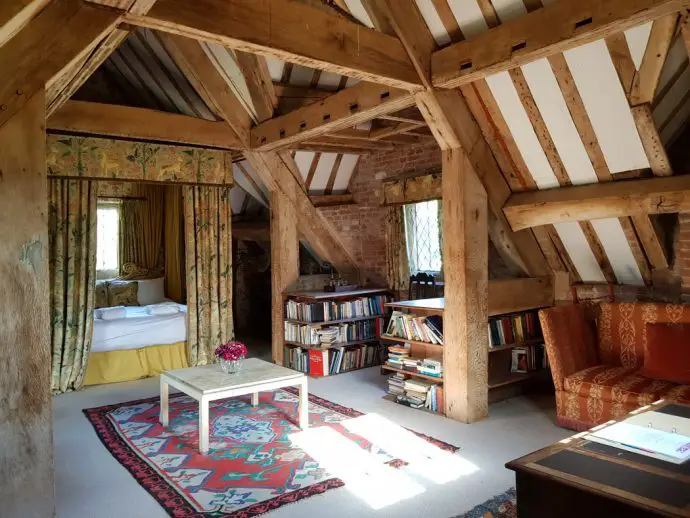
The four-poster canopy bed looks stately at the far end of the room, with embroidered drapes transporting you back to Elizabethan times. It’s actually pretty comfy, and very cosy at night when the wind is howling around the turrets outside. It had a heated blanket too which was a thoughtful touch – we visited during a warm August week but I can image during winter it can be pretty chilly.
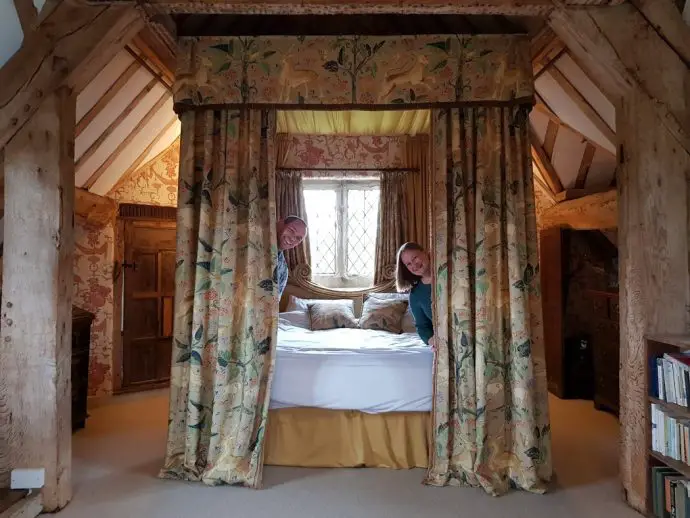
There’s a photogenic free-standing claw bath in one of the bedroom alcoves – have you ever had such a regal bath?
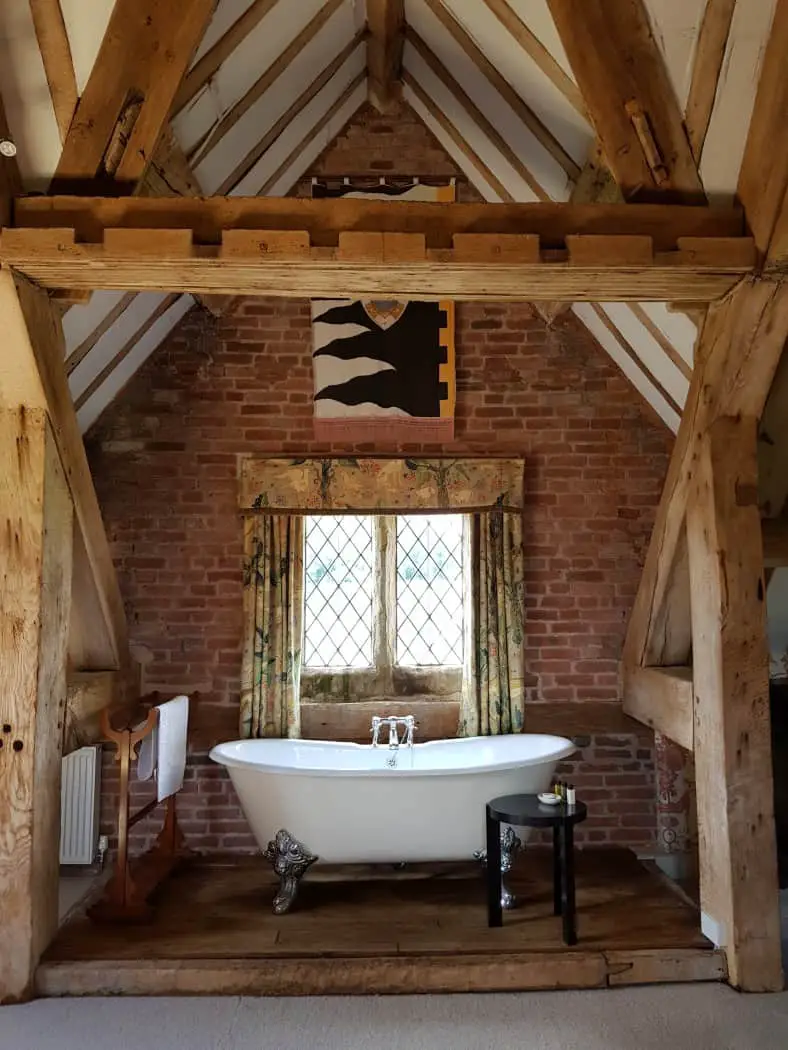
More practically, there’s an en-suite bathroom in the adjoining turret, with a few more modern trimmings. The shower door didn’t shut properly, so the bathroom floor was often flooded, but such are the quirks of renovating a 16th-century building!
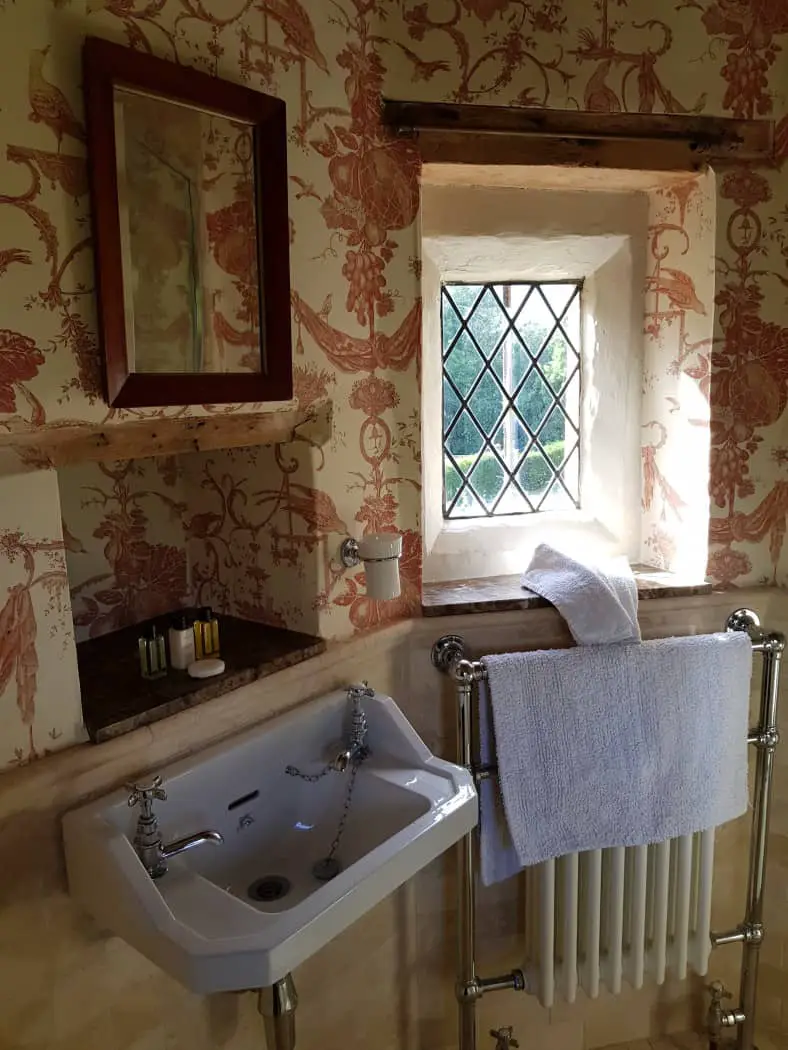
Looking out of the windows you can see the deer park stretching out across the undulating hills. This room was once a viewing chamber where ladies of the estate would gather to watch deer hunts.
Thatcher Suite
You’ll find the Thatcher Suite on the first floor, named after the Prime Minster who stayed here for a couple of nights with husband Sir Denis. The corridor is a feast for the eyes, with painted linen tapestries by artist Adam Dant that are named the ‘Four Seasons of Prince Rupert’.
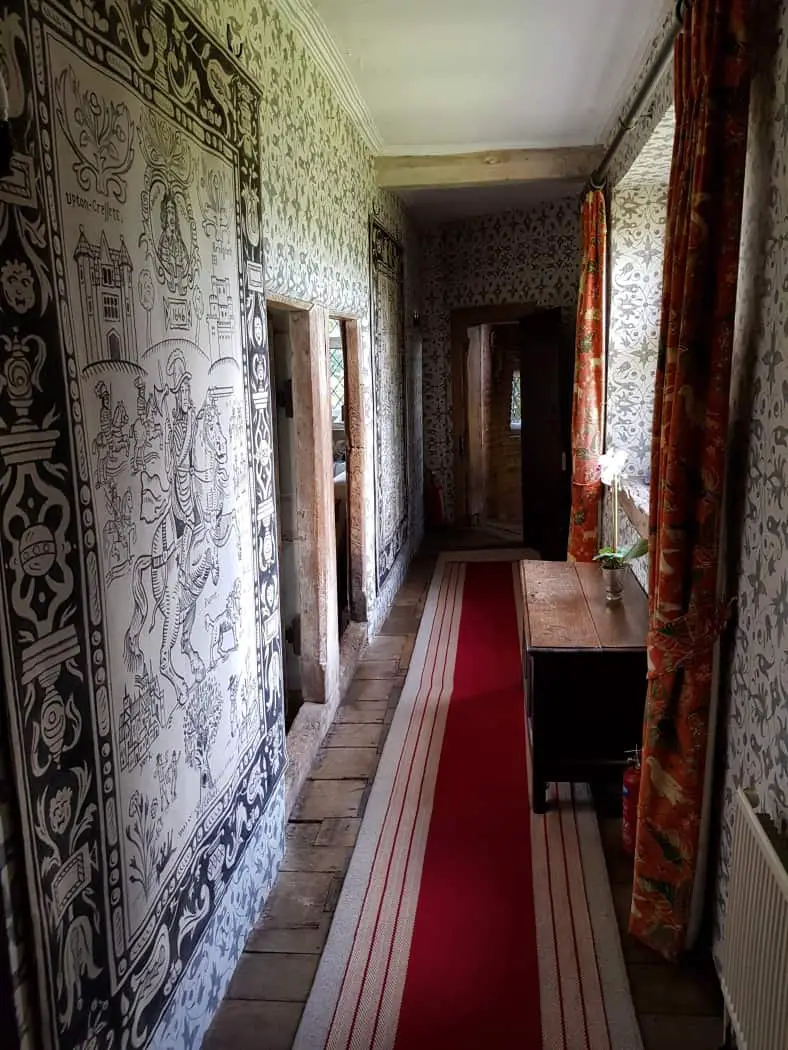
Both the Thatcher bedroom and the living room are off this corridor, and despite having heaps of space upstairs, we ended up spending our evenings in this lounge as it was much warmer. Even in the height of summer it was a bit nippy after the sun had gone down and we put the heater on whilst we watched movies on our laptop. There’s a Tudor fireplace which will make it very cosy during winter! Top tip – the wi-fi is at its best here in the living room!
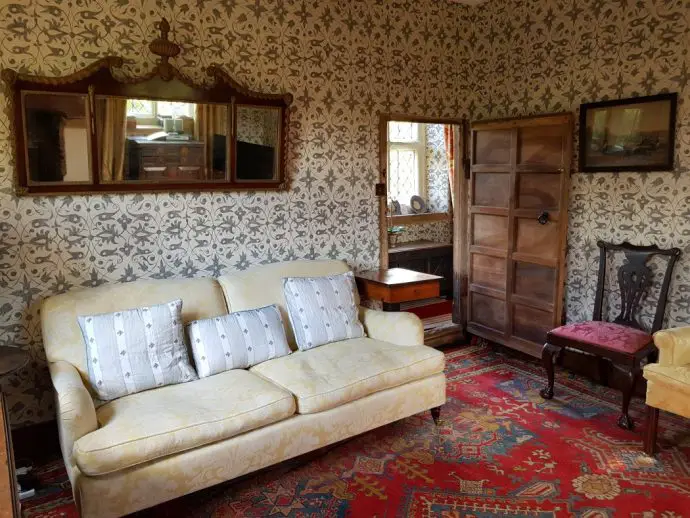
Overlooking the apple garden, the bedroom itself has changed little since Maggie’s visit, with a half-tester canopy bed and plenty of oak panelling.
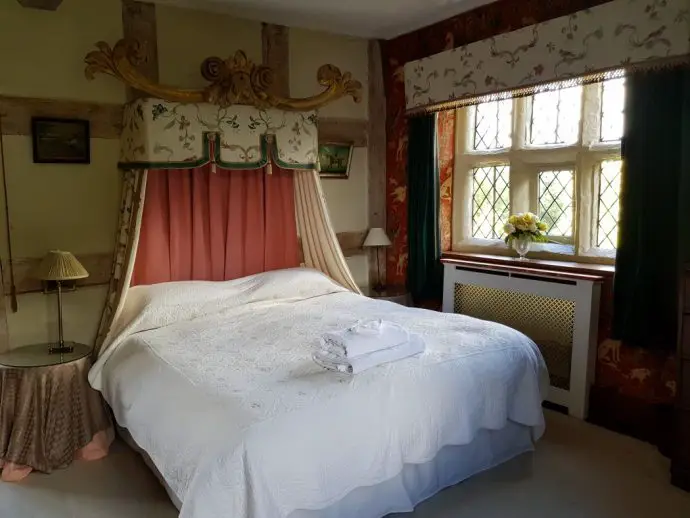
Next door at the end of the corridor is a wet room delightfully housed in the turret, with under floor heating to keep it warm in colder months.
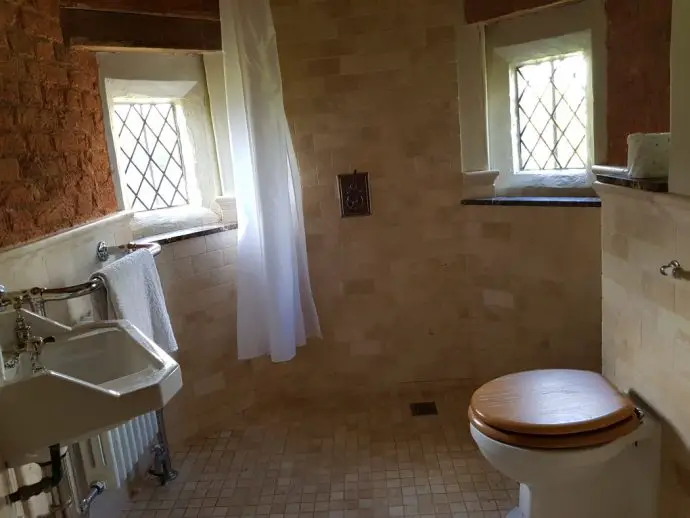
Kitchen and Dining Room
Back down on the ground floor is the kitchen, which has pretty much everything you’d need for a few days of self-catering. We ate in here most evenings as it was cosy after cooking, but if there are more than two of you in your group, or you fancy being a bit posh with a proper banquet, then the dining room is just the ticket.
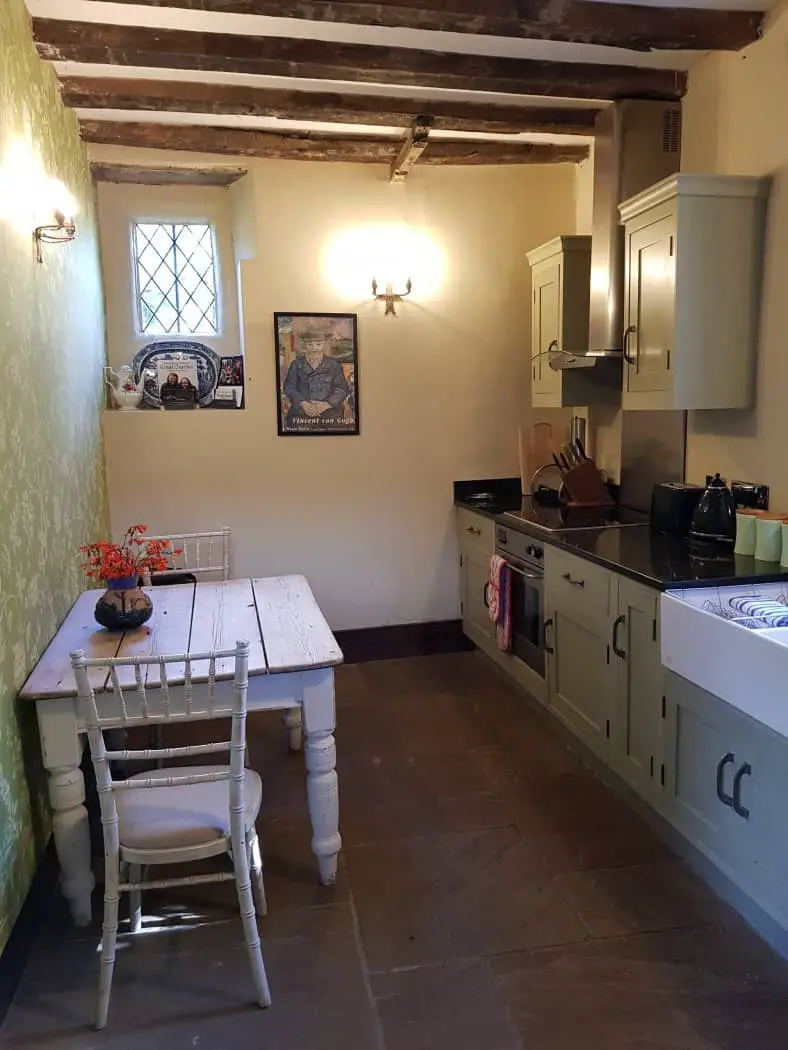
Over in the other ‘leg’ of the gatehouse you’ll find the hunting lodge style dining room, complete with Tudor log fireplace, a hand-painted ceiling, and an elegant table laden with candlesticks. To get to the dining room you have to go outside – the door is on the opposite side of the archway that runs through the gatehouse.
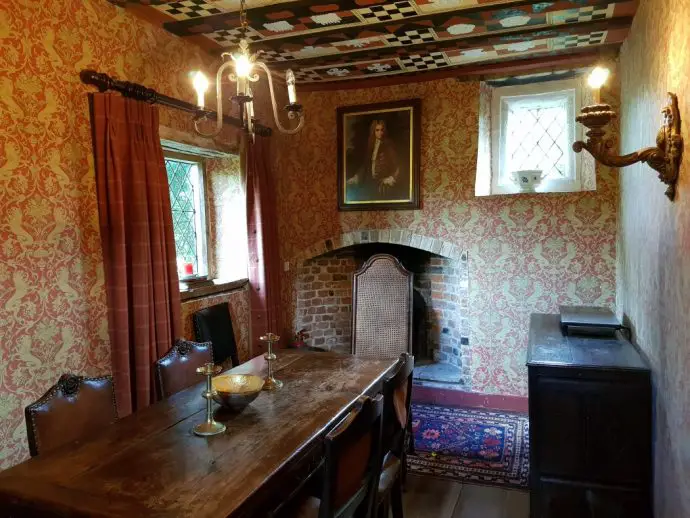
Outside
We loved the archway beneath the gatehouse, which was ornately and colourfully decorated with murals of English monarchs through the centuries. They’ve run out of room at Elizabeth II, so I’m not sure where Charles and William are going to go!
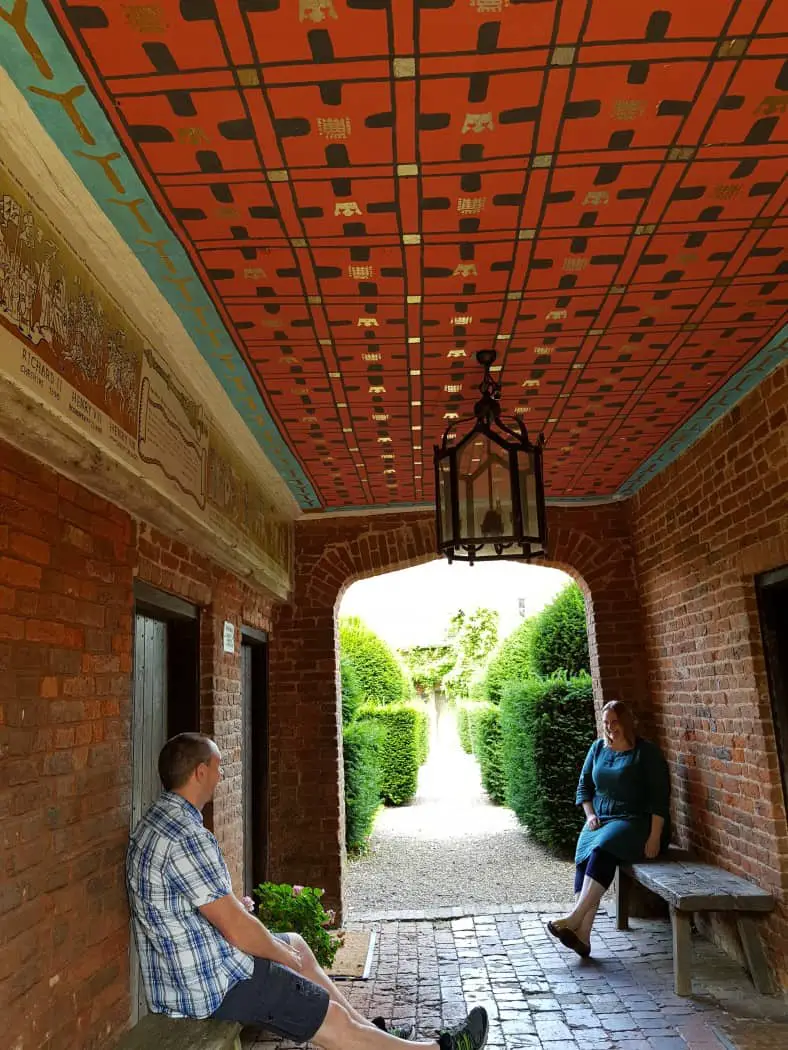
Guests staying at the Chevalier’s Gatehouse have use of a private medieval apple garden with a Jacobean fountain and picnic furniture for sunny days. You can pick the apples too, for the juiciest munch ever! They’re seriously delicious, maybe something to do with the long lineage behind each tree.
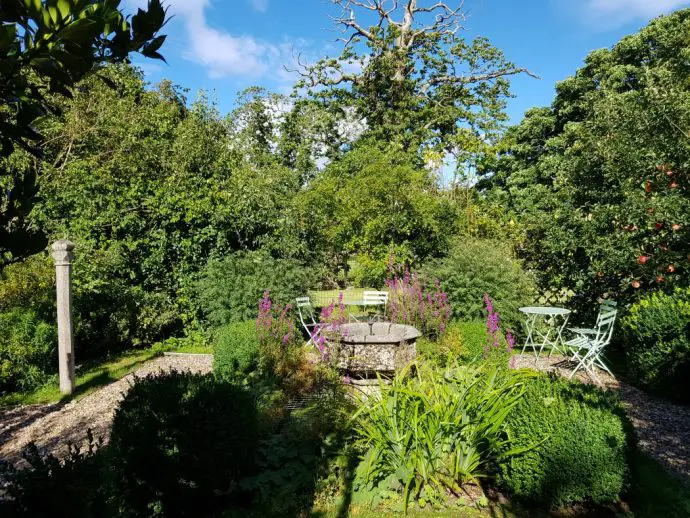
St Michael’s Church
Tucked away in the grounds is the Grade I Listed Norman church of St Michael, which dates back to the 11th century. The architecture is rustic with a simple charm and an air of peace.
Curiously, the Norman font was removed from the church in the 1960s and taken to Gordonstoun where Prince Charles was at school. Apparently he wished to be surrounded by beautiful ancient objects, and the font fit the bill. It was returned a few years later to its rightful resting place, here in the church.
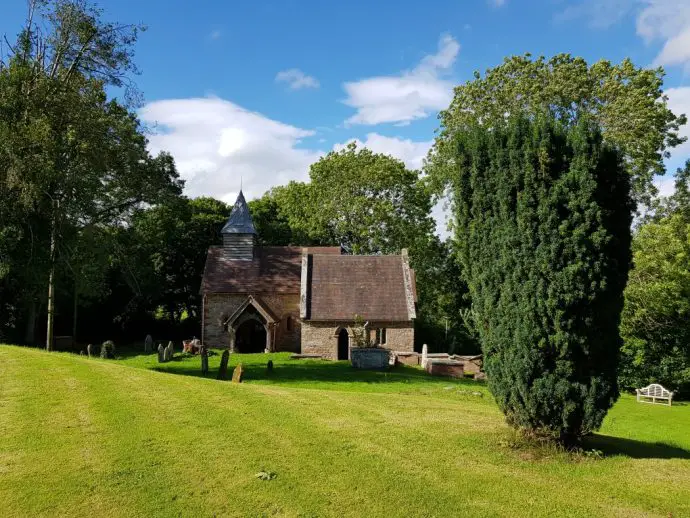
What We Loved
What’s not to love about being able to stay in a 16th-century gatehouse? This place is simply incredible, with so many original features and period furnishings to give it that truly historic feel. We loved strolling around the grounds, picking apples to eat in the afternoon sun, and retreating to our sumptuous pile after a day of sightseeing.
The location is superb too, hidden so well in the leafy green countryside that probably not even many of the locals know it’s there!
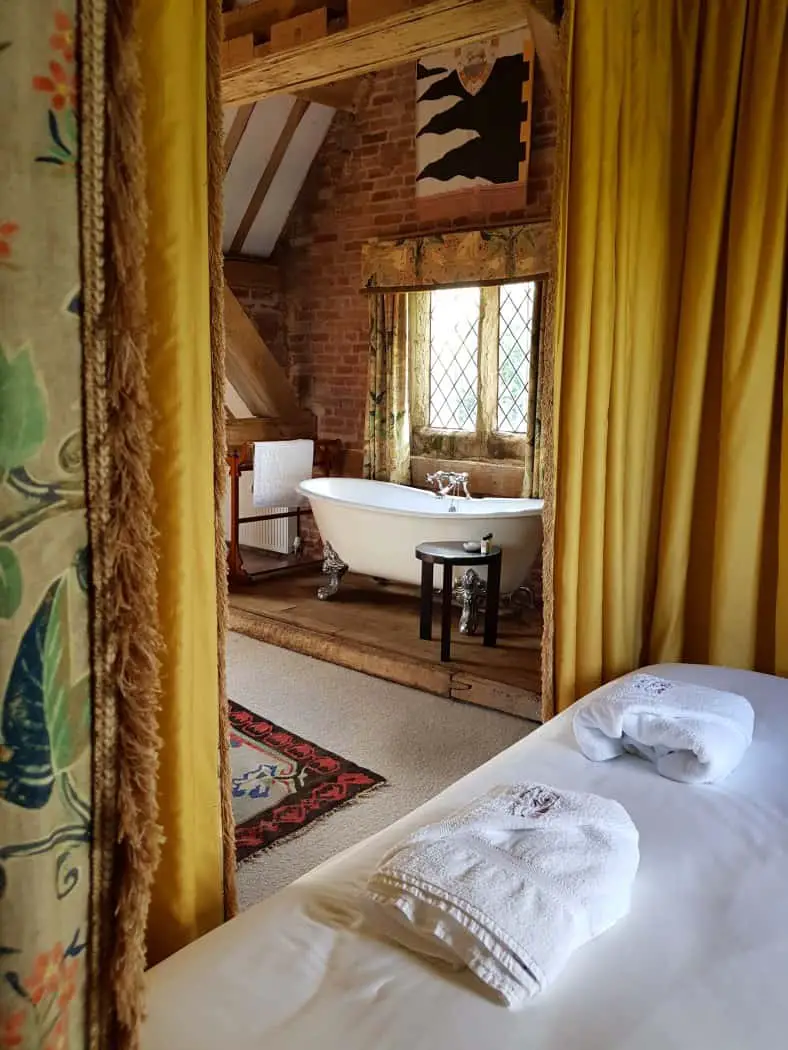
We also treated ourselves to one of their luxury hampers, and the owners kindly threw in a few extra goodies (as well as a complimentary extra night) to apologise for having to change our original dates, which was very welcome.
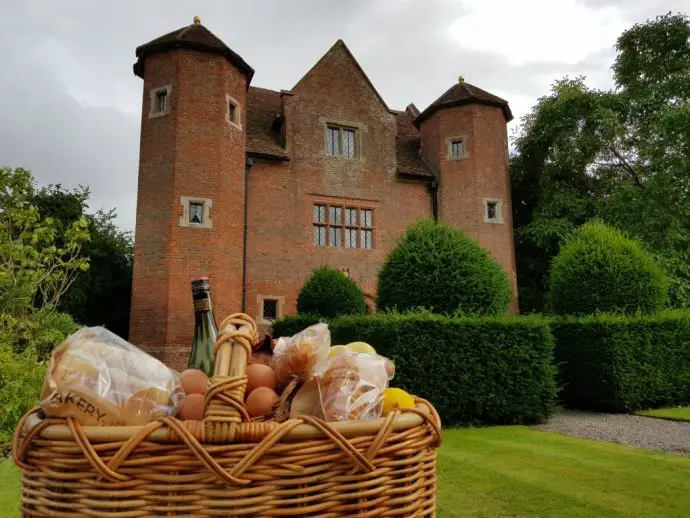
What Wasn’t So Great
The only thing that wasn’t quite up to scratch at the Chevalier’s Gatehouse was the cleanliness. Of course it’s no easy task keeping such a large historic building clean, and we certainly wouldn’t be bothered by lofty cobwebs and a bit of dust here and there. Yet many of the low-level surfaces were thick with dust, and some of the floors were in need of a good vacuum. We also found several mouse droppings in the first floor bathroom and upper bedroom, which were in plain sight and really should have been cleared up.
The Verdict
So, would we stay here again? Absolutely – this is one of the quirkiest places we’ve ever stayed in the UK, and certainly ticks all the boxes when it comes to style.
The price tag is pretty hefty, but you’re paying for the privilege of staying in one of the most historic properties on English soil, which makes it easier to swallow. The luxury here is having tangible history at your fingertips, and of course the fact that you can stay in a gatehouse and have exclusive use of it isn’t something that happens every day.
Other Accommodation on Site
There are a couple of other luxury self catering properties on site too, which are more modern inside and are great if you’re looking for a larger family getaway. The Moat House and The Coach House are beautifully situated around a large courtyard area, just around the corner from the gatehouse.
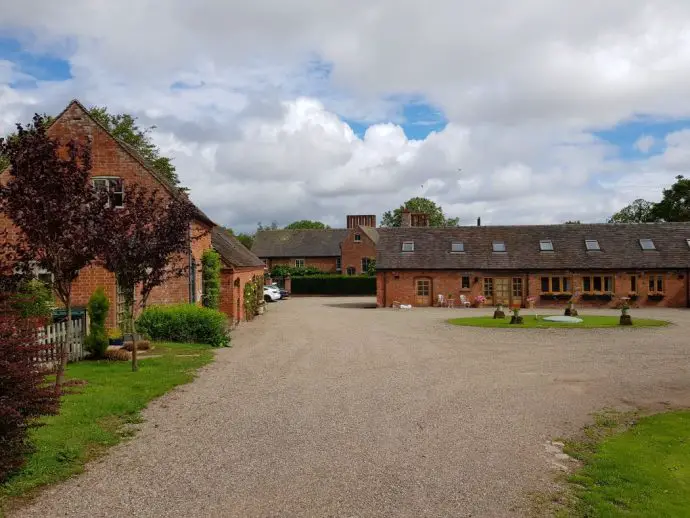
Obviously, the Chevalier’s Gatehouse stands head and shoulders above the other properties in terms of character and history, so if you’re travelling with friends, make sure you get first dibs on these rooms!
Things to do in the Area
We spent four glorious nights at the Chevalier’s Gatehouse, and could’ve stayed a week as there’s just so much to do here. We visited during the 2020 pandemic, so didn’t take in as many attractions as we normally would, but what we did see we had pretty much to ourselves.
Yet even in the height of summer during a normal year, we don’t think you’ll be fighting the crowds. This is quiet, rural England at its finest.
Much Wenlock
Much Wenlock was hands down our favourite town in the area, with charming cobbled streets lined with medieval houses and an old world vibe that really touches the soul. We recommend popping into the beautiful Grade II Listed Guildhall which has been used for over four centuries for administrative and judicial proceedings. It’s still in use today for council meetings.
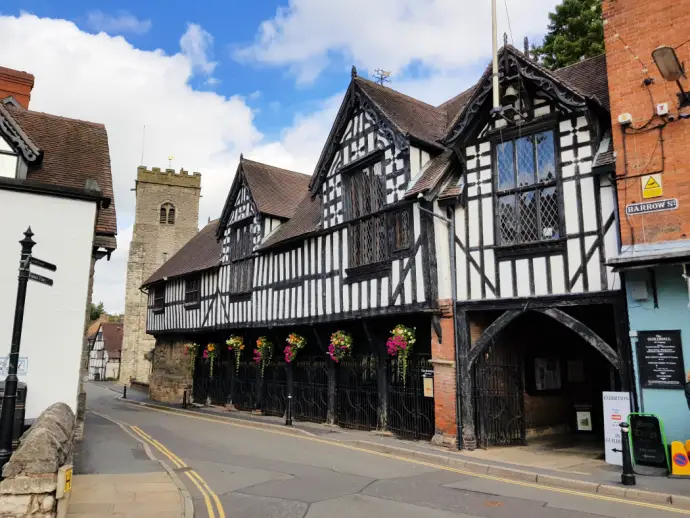
Inside there are several exhibitions and historic objects on display, but the main draw is the chamber which is fitted out with incredible carved wooden furnishings.
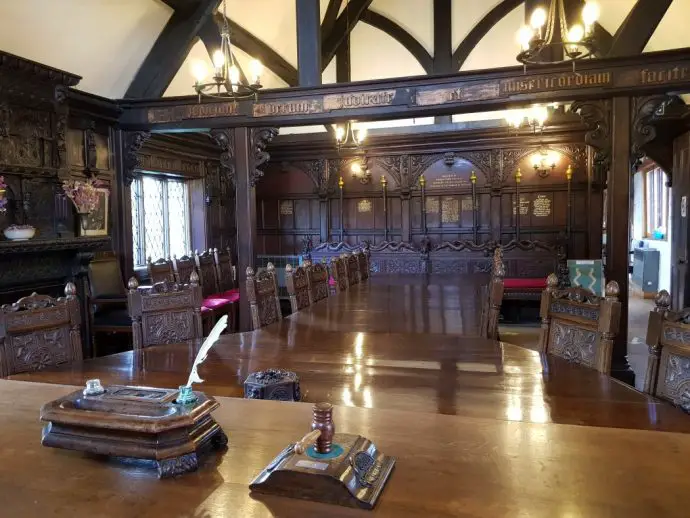
On the edge of the town centre are the historic ruins of Wenlock Priory, which date back to around 680 AD. This Anglo-Saxon priory was an ancient pilgrimage site, later becoming home to Cluniac monks during Norman times. You can still see parts of the 13th-century church today! We enjoyed our visit so much that we spent a whole afternoon there, sitting on a bench amongst the lavender and the buzzing bees, just taking in the atmosphere. Maybe we’re getting old, but it felt good.
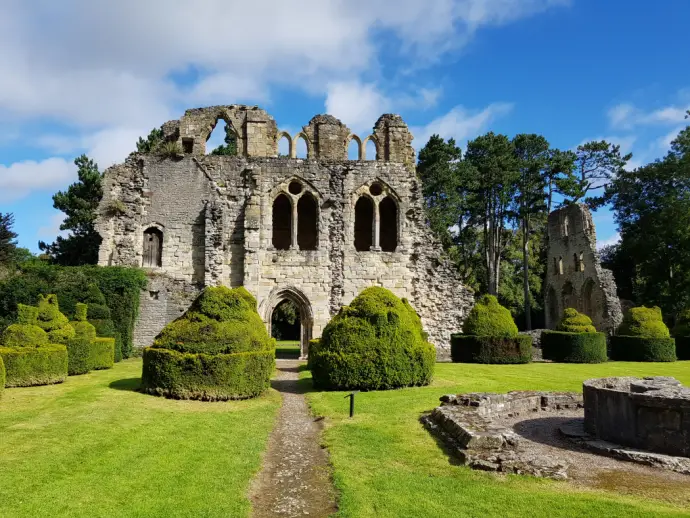
We also went for a walk along Wenlock Edge, which to be honest was a little disappointing. After a hasty bit of last-minute research, we thought we’d be enjoying sweeping panoramas out over the countryside, but actually the trail we chose from Presthope carpark was mainly wooded, with very little in the way of views.
Looking at the visitor boards it didn’t look like the other waymarked routes were any better, although we’d love to be corrected. Maybe if you visit during winter when the foliage has died down you’ll get the views! We did see lime kilns and a bird hide, which was pretty cool.
Buildwas Abbey
Just outside Much Wenlock you’ll find the magnificent ruins of Buildwas Abbey sitting quietly in a peaceful wooded hideaway beside the River Severn. The central arches of this Cistercian abbey are still in tact, and you can see the well-preserved tiled floor in the chapter house as well as the chapel crypt.
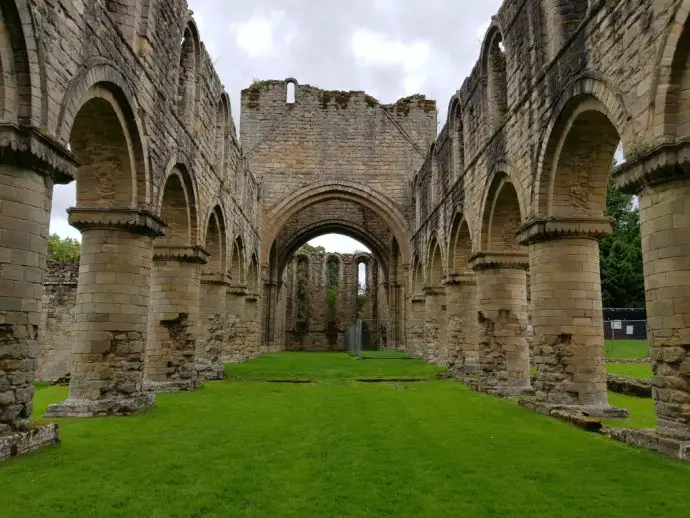
It makes sense to combine a visit to the abbey with a day out at Much Wenlock and Ironbridge.
Ironbridge
Anyone who has sat through school history lessons in England will have heard about Ironbridge, and perhaps even visited on a field trip! The Ironbridge Gorge is known as the birthplace of the Industrial Revolution, and today there are plenty of museums to explore, as well as the famous bridge itself – the world’s first such structure made from iron.
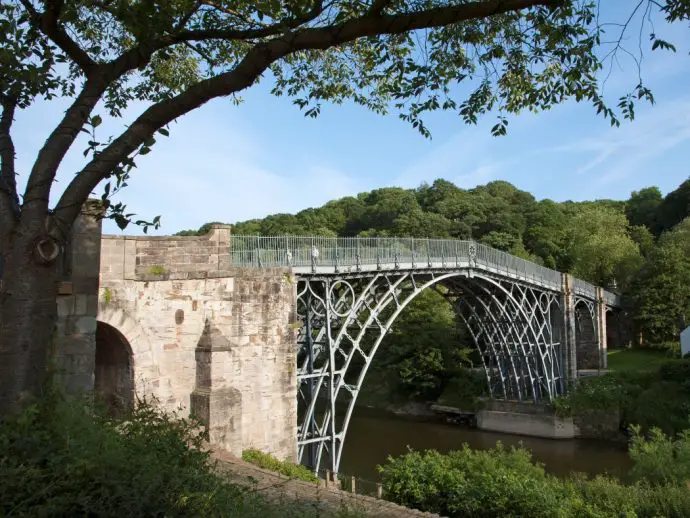
The area is far from ‘industrial’ today though, with several walking trails along the wooded valley to explore.
Bridgnorth
Divided in half by the River Severn, Bridgnorth is another town full of historic charm. Once a busy river port, today it’s a peaceful place with bags of character including a half-timbered town hall, several ancient churches, and the Northgate Museum.
The high and low parts of town are linked by the famous Cliff Railway – a Victorian funicular that gives great views out over the surrounding area. Apparently it’s the oldest and steepest inland railway of its kind in the UK. Alternatively, you can walk up the ancient ‘donkey steps’ if you want to stretch your legs.
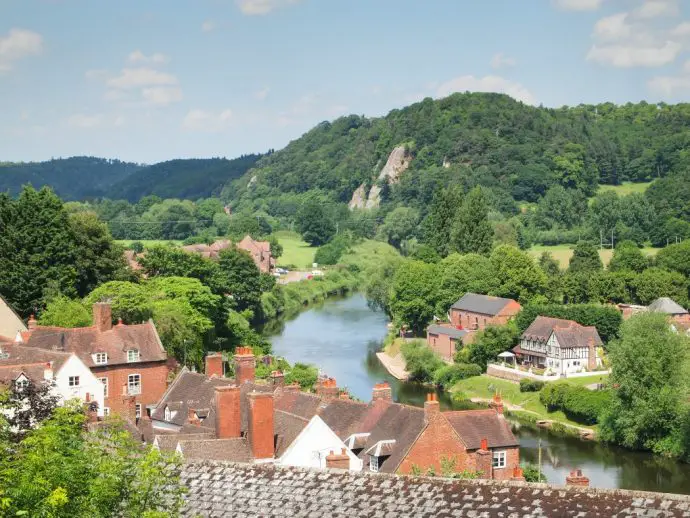
You can also visit the remains of the 12th-century Bridgnorth Castle, which has a tower that leans more than the Leaning Tower of Pisa! Or jump on the Severn Valley Railway for a trundle through the countryside.
Ludlow
The medieval market town of Ludlow has a lively vibe, with ancient streets crammed with quaint coffee shops in creaking old houses decked out in black and white architectural splendour. The star of the show is the 11th-century castle, which sits on a clifftop overlooking the surrounding Shropshire countryside and the Welsh Marshes beyond.
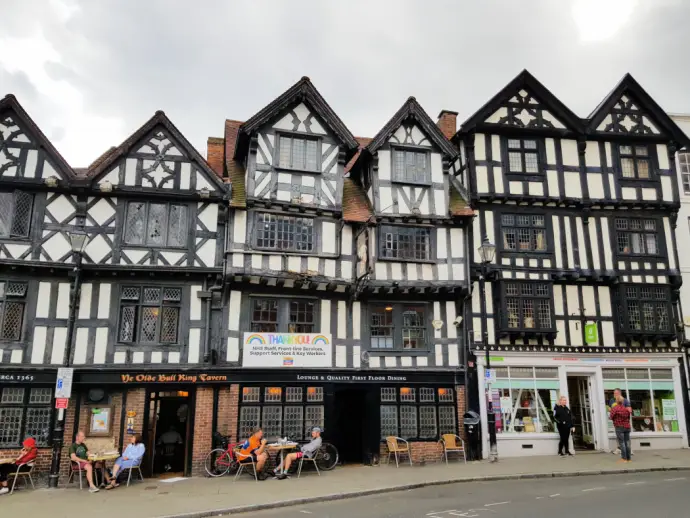
We were particularly taken with St Laurence’s Church, which was more like a cathedral inside in terms of its grandeur. There are weekly markets in the square, and the Medieval Christmas Fair is one of the best in the UK. Ludlow is the sort of place where you can spend an afternoon strolling through the streets with your camera, not doing anything in particular. It is popular though, so if you want to bag a parking spot that doesn’t mean a long walk uphill, then come early.
Hopton Castle
We love an old crumbling castle ruin, especially when they’re free to visit, and Hopton was a real hidden gem, secreted away down a maze of long country lanes in the middle of nowhere. Dating back to the 11th century, Hopton Castle is famed for being besieged during the English Civil War, with the Parliamentarian inhabitants coming to an unhappy ending at the hands of the Royalists.
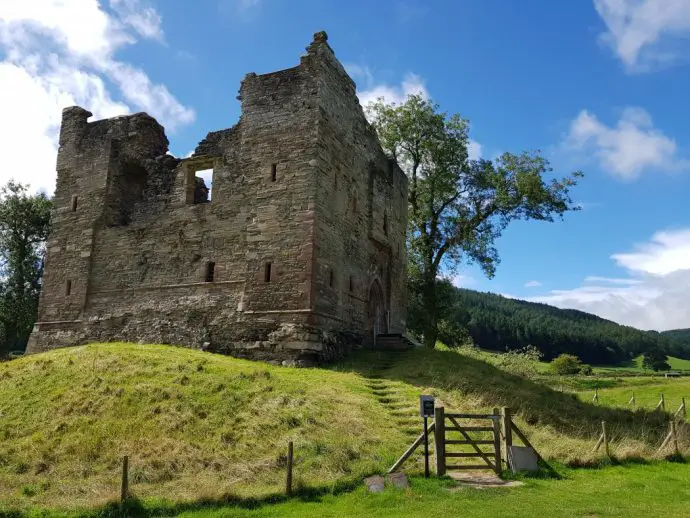
There’s not much left of the fortress today, but it’s a pleasant stroll in a rural setting so definitely worth the detour.
Clun
We loved the picturesque village of Clun, in the Shropshire Hills AONB, just a few miles from Hopton Castle. To get here there’s a leisurely drive through rolling green countryside and sleepy hamlets, past thatched houses and trickling becks. The village itself is the kind of place where picnics and feeding the ducks is the norm on a sunny afternoon, beside the photogenic packhorse bridge.
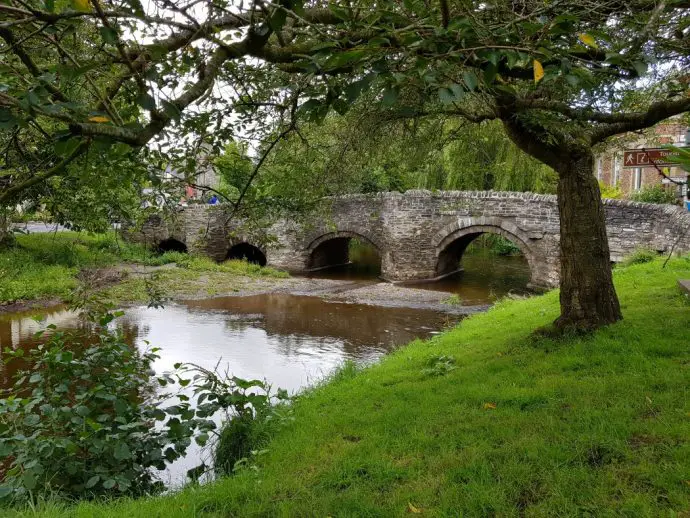
Take a walk up the small hill to the 13th-century Clun Castle ruins – the building itself isn’t much to look at, but the 360-degree views are! This was one of the Borderland castles and being just 10 miles from Wales, it saw frequent disputes and sieges over the years. It was a traditional Normal motte and bailey castle, and today you can still see the remains of the keep. The castle is free to enter, which is always a bonus!
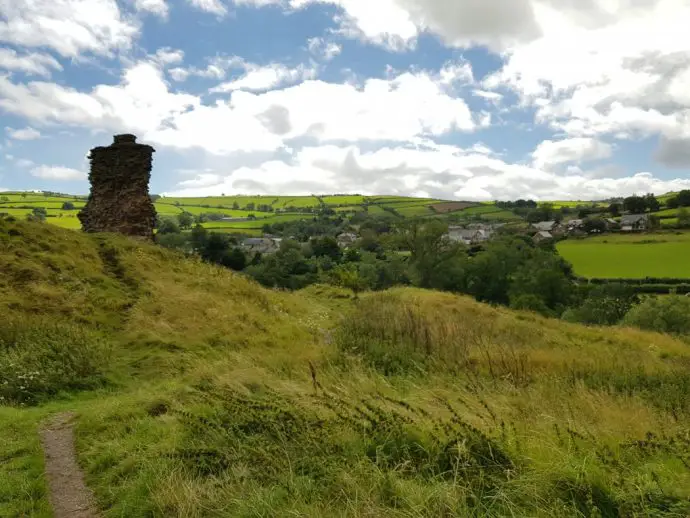
Acton Burnell Castle
Continuing the ruined castle theme, this impressive 13th-century structure with its towering red sandstone walls is actually a fortified manor house, on the edge of the village of Acton Burnell. It was built by Bishop Burnell, Lord Chancellor to Edward I, and used a couple of times to hold Parliament meetings.
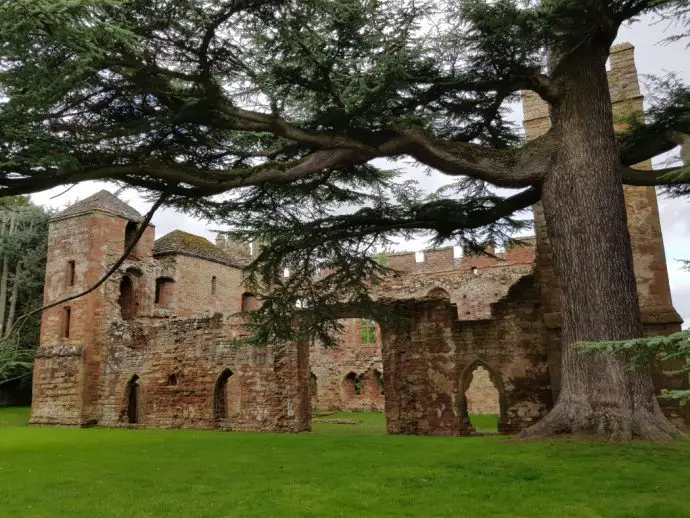
Acton Burnell Castle was abandoned back in 1420, but with the medieval walls still largely in tact, it’s well worth a visit. Whilst you’re there, pop into the church next door – the stained glass windows and tombs are quite a sight!
Langley Chapel
Just a mile from Acton Burnell is the impossibly quaint and unassuming Langley Chapel. Surrounded by countryside and hidden on the edge of a cornfield, the chapel dates back to the 17th century, with a traditional interior that will transport you into another world.
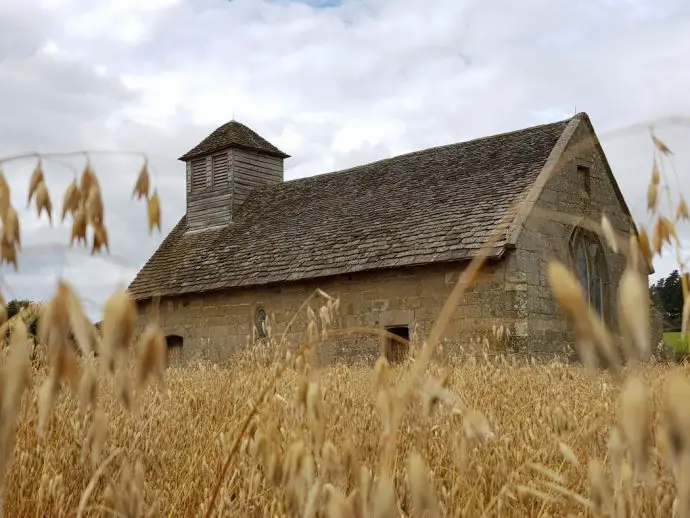
There are still box pews and a desk for musicians inside this humble church, as well as benches for the less wealthy members of the congregation.
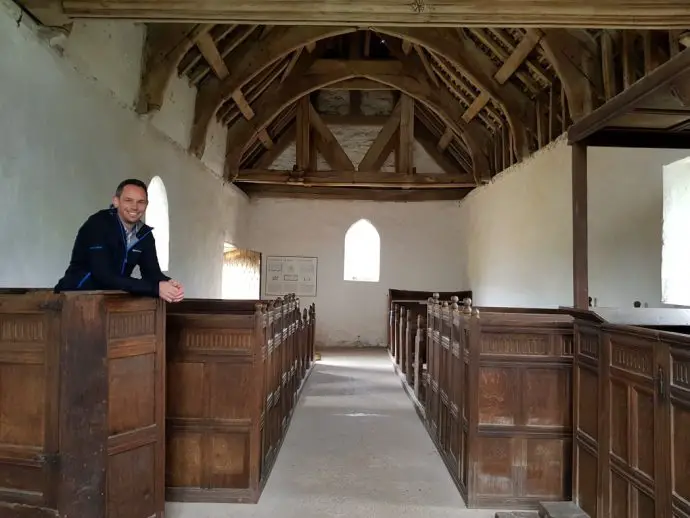
Lilleshall Abbey
This Augustine Abbey was founded in 1148, and became a private residence after the Reformation. Like many grand buildings in Shropshire, it was badly damaged during the Civil War during a Parliamentarian siege, yet many of the walls and parts of the tower still stand, so the sight remains formidable.
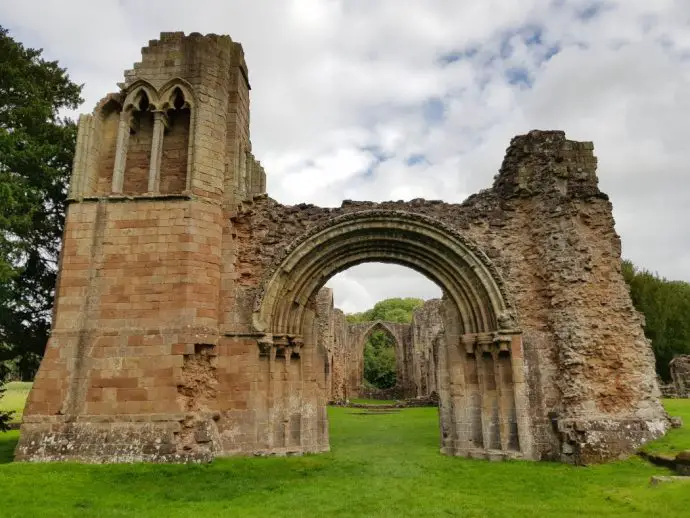
Lilleshall Abbey has several ornately carved arches and doorways, and the remote setting makes the journey out here just as exciting as the place itself.
Found this post useful? Pin it for later…
